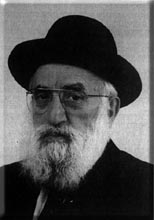Beit Midrash
- Torah Portion and Tanach
- Bamidbar
- Balak
The Torah study is dedicatedto the full recovery of
Yehudah ben Hadasah Hinde Malkah
Targum Unkelus and in his footsteps, Rashi, explain that it means, quietly. Ibn Ezra says that just as this usage of the word is unique throughout Tanach and thus stands alone, so too the word itself means that Bilam walked alone. He quotes another commentary that explains that it refers to an oppressed heart, as a similar word connotes in Iyov (33, 21). The different approaches can be connected, since one may walk alone and silently because he is in a depressed frame of mind.
The Rashbam says that shefi describes Bilam’s physical malady. After the donkey pressed Bilam’s leg against a wall, Bilam became lame (see Sota 10a), which too is related to the malady of Iyov (ibid.). According to this explanation, Bilam’s lameness was a result of the events surrounding his attempt to curse Bnei Yisrael.
Midrashim take us in different directions on the matter. We will bring and try to explain two of them. One (Midrash Aggada) is that shefi hints that he was mefashfesh (searched for) the time when Hashem would be angry, during which time a curse would be particularly effective. Another (Psikta Zutrata) connects Bilam to a shefifon alei orach (a snake along the way), as he was a sorcerer (one of the words for a sorcerer shares its letters with the word for snake) who slivers on the ground like a snake. This must be related to the actions of sorcery that Bilam partook in while trying to curse Bnei Yisrael. (See Yehoshua 13:22 and Bamidbar 24:1, where Bilam is described as a magician and in which the word nachash is used.)
The Ramban and Radak (Yeshaya 13:2) explain that he was going to shefi, meaning a high place. He found this to be the best place to get a good look at Bnei Yisrael and curse them. The navi uses the same root to refer to a high mountain: "The prophecy of doom of Bavel that Yeshaya ben Amotz saw: On a high mountain (har nishpeh) raise a banner, raise a voice to them ..." (Yeshaya 13:2). If this literally refers to Bavel, it is difficult as there are no big mountains in the flat Bavel. Some say that the prophecy refers to the neighboring (to the west) nation of Assyria. There are several indications that this is the case. If indeed this is true, then the place that Bilam climbed to when he was going shefi may be the same har nishpeh that was referred to hundreds of years later by the prophet, Yeshaya.






















